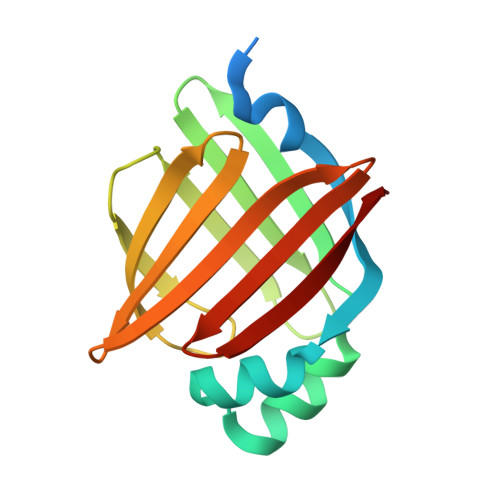Structure-based design of potent FABP4 inhibitors with high selectivity against FABP3.
Chen, G., Xie, H., You, M., Liu, J., Shao, Q., Li, M., Su, H., Xu, Y.(2023) Eur J Med Chem 264: 115984-115984
- PubMed: 38043490
- DOI: https://doi.org/10.1016/j.ejmech.2023.115984
- Primary Citation of Related Structures:
8WDX, 8WE3 - PubMed Abstract:
Fatty-acid binding protein 4 (FABP4) presents an attractive target for therapeutic intervention in metabolic and inflammatory diseases in recent years. However, highly similar three-dimensional structures and fatty acid binding ability of multiple FABP family members pose a significant challenge in design of FABP4-selective inhibitors. Particularly, inhibition of FABP3 raises safety concerns such as cardiac dysfunction and exercise intolerance. Here, we reported the discovery of new FABP4 inhibitors with high selectivity over FABP3 by exploiting the little structural difference in the ligand binding pockets of FABP4 and FABP3. On the basis of our previously reported FABP4 inhibitors with nanomolar potency, different substituents were further introduced to perfectly occupy two sub-pockets of FABP4 that are distinct from those of FABP3. Remarkably, a single methyl group introduction leads to the discovery of compound C3 that impressively exhibits a 601-fold selectivity over FABP3 when maintained nanomolar binding affinity for FABP4. Moreover, C3 also shows good metabolic stability and potent cellular anti-inflammatory activity, making it a promising inhibitor for further development. Therefore, the present study highlights the utility of the structure-based rational design strategy for seeking highly selective and potent inhibitors of FABP4 and the importance of identifying the appropriate subsite as well as substituent for gaining the desired selectivity.
Organizational Affiliation:
School of Pharmaceutical Science and Technology, Hangzhou Institute for Advanced Study, University of Chinese Academy of Sciences, Hangzhou, 310024, China; State Key Laboratory of Drug Research, Shanghai Institute of Materia Medica, Chinese Academy of Sciences, Shanghai, 201203, China; University of Chinese Academy of Sciences, Beijing, 100049, China.
















